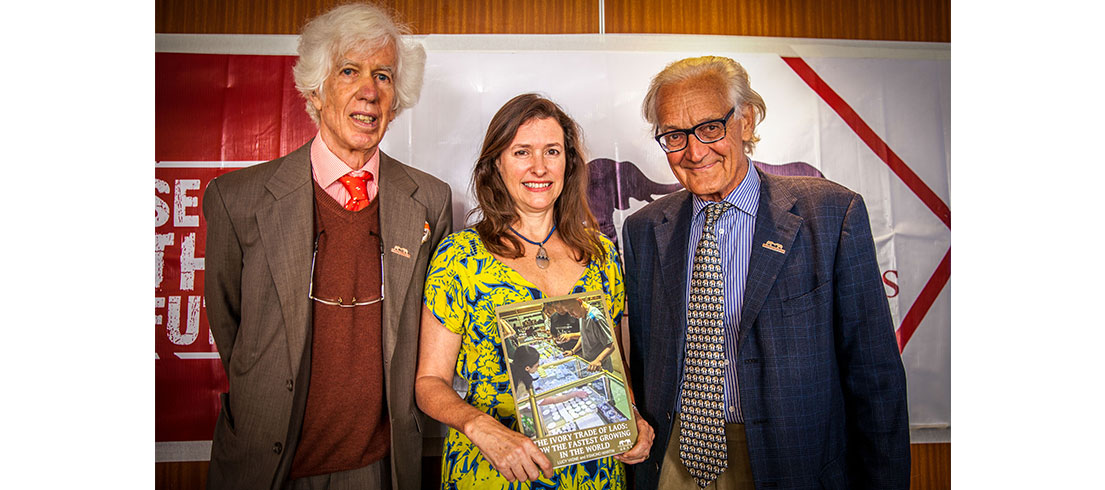With his blaze of white hair, gentlemanly manner and love of brightly coloured suits and silk handkerchiefs, Esmond Bradley Martin was distinguished in more ways than simply by his status as one of the world’s top ivory investigators.
Despite his distinctive looks, this tall, elegant former UN special envoy on rhino conservation risked his life many times while secretly documenting the sales of rhino horn and elephant ivory in some of the most dangerous corners of the world, all in an effort to stop the trafficking and ultimately the slaughter of the wildlife he loved.
Esmond was one of conservation’s unsung heroes. Although humble and gentle, he was a towering figure in the fight against the illegal ivory trade ever since his early work on the subject in the 1980s together with his wife, Chryssee. He began working with Save The Elephants 18 years ago with his first report – The Ivory Markets of Africa, published by us in 2000. Alongside his partners in research, Lucy Vigne and Dan Stiles, he went on to produce another nine reports for STE, garnering press coverage around the world and helping to draw attention to the widespread black markets in illegal wildlife trade. His last report, on Myanmar, was in preparation and is due to be published in a few months.
Esmond’s work was meticulous, his tried-and-trusted methods of surveying markets and talking to traders carried out with great skill, patience and rigour. For weeks on end he would chart the number of ivory pieces that he found, their location and their prices, all the while hiding his intentions in plain sight. It was intense work, but when published no-one could deny the results. As a consequence, his work was an important element in encouraging China to enact its ivory ban last year, and has laid foundations for taking on the secondary markets that have been springing up in response.
Despite being 76, Esmond worked at a pace that would have exhausted a man half his age, rarely taking time away from his work. Just two days before his death he was in our Nairobi office, excited to see the Laotian translation of his latest report into Laos’ growing trade, and eager to discuss how it could be used to greatest effect.
Demonstrating his fearless spirit and determination to get to the truth, Esmond had travelled to the jungles of Laos, along with Lucy Vigne, to expose a lawless hotspot where illegal wildlife products were on sale along with drugs and gambling. The only westerners other than eastern European prostitutes, they ignored the dangers of being so visible and documented the shops that were openly displaying carved tusks and mass produced ivory bangles, pendants and beaded bracelets for their largely Chinese customers. Their report, published in September last year, found that Laos was the fastest-growing illegal ivory market in the world.
It’s hard to believe Esmond, with all his gentleness, has been taken from this world and in such a violent manner. His death has been felt across the globe with strangers, friends, colleagues and members of the press all voicing their shock and sadness.
Esmond’s dedication, commitment and passion will live on in the continuation of his important work in monitoring ivory markets, and we at Save The Elephants will do all we can to honour his memory by ensuring his research continues to have a profound impact on illegal wildlife trafficking across the world. Esmond is survived by his much beloved Chryssee, with whom he had a long and happy marriage.

Esmond Martin, Lucy Vigne and Iain Douglas-Hamilton in Nairobi at the launch of ‘The Ivory Trade of Laos: Now the fastest growing in the World’ Report (2017)

